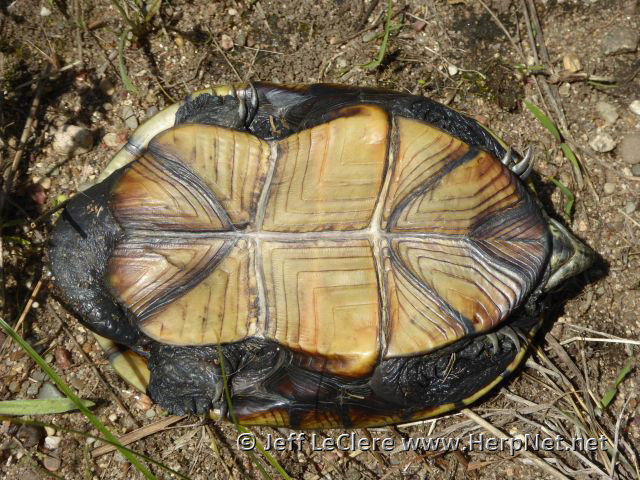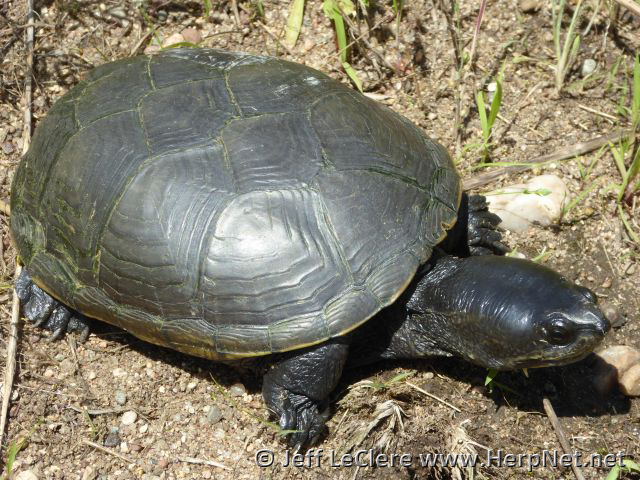Yellow Mud Turtle (Kinosternon flavescens)
by Jeff LeClere
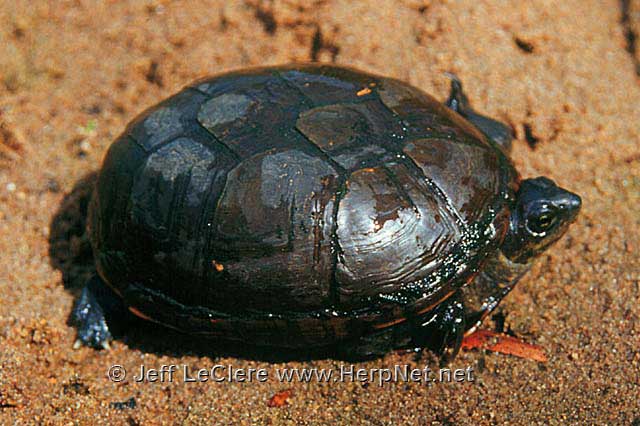
Status
ENDANGERED and Species of Greatest Conservation Need. It is illegal to kill or collect this species by law in Iowa. Yellow mud turtles are very rare in Iowa and are completely protected. Any seen should be reported.
Description
The yellow mud turtle is Iowa’s second smallest turtle species. Adults are only about 5 inches long carapace length. The carapace is dark with no markings. It is rather flattened on the top. The carapace is oblong shaped. The plastron is much more developed than in the similar eastern musk turtle. The plastron is yellowish with dark lines, but there are no spots or blotches. There are two hinges present, one toward the front and one toward the back.
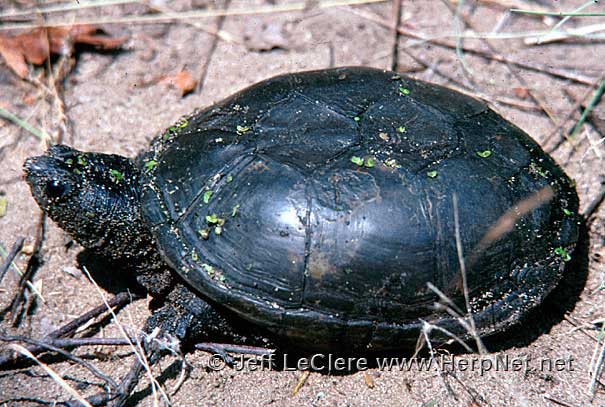
The ground color of the skin is black or dark olive. There are no markings on the skin except that the underside of the chin, throat, and limbs tend to be lighter in color. The absence of markings, and the appearance of the shell distinguishes the mud turtle from all other Iowa turtles. Males are slightly larger than females and have a longer, thicker tail.
Hatchling mud turtles are less than an inch. They have small yellow dots present on the edge of the carapace, and no vertebral keel.
Subspecies
No subspecies are currently recognized. Formerly the Illinois mud turtle, Kinosternon flavescens spooneri, was the subspecies listed in Iowa.
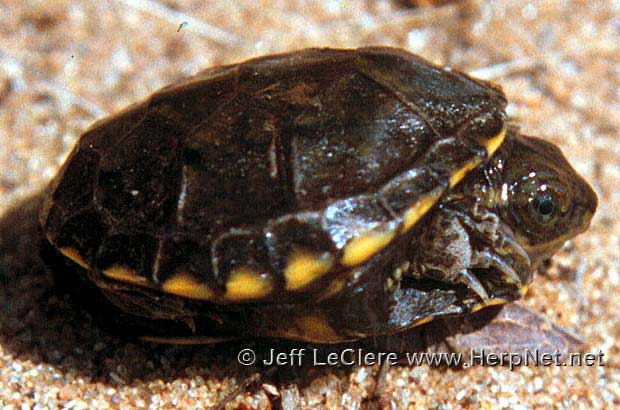
Range
The yellow mud turtle is only found in few, small scattered populations along the Mississippi Alluvial plain in eastern Iowa.
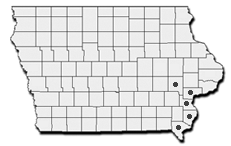
Habitat
Yellow mud turtles live in marshes, ponds, slow moving ditches, and other shallow bodies of water closely associated with the Mississippi River. Sandy terrain surrounding these waters are essential.
Habits
Christiansen and others have done extensive work with yellow mud turtles in Iowa and nearly all of the following data are from their works and observations. Yellow mud turtles become active in late April and travel to shallow water to feed and mate. Ephemeral pools are frequently used. Courtship and mating occurs in early May, possibly before they begin feeding (Christiansen, et. al. 1985). Feeding begins later in May and continues through the middle of July.
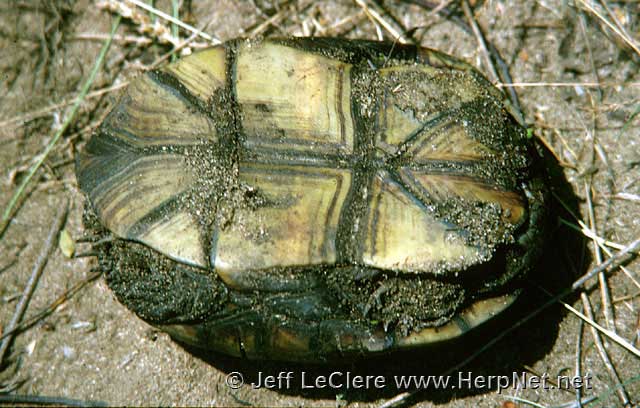
The yellow mud turtle has the shortest feeding and activity period of any North American turtle. Apparently, yellow mud turtles leave the quickly drying pools around late July to begin aestivation. They choose upland sandy dunes and bury themselves until the following spring. A few specimens have been observed overwintering in the water, but this number is extremely small (Christiansen and Bickham, 1989).
Yellow mud turtles nest in late May and early June (Ernst, Lovich and Barbour, 1994). Clutch size varies from one to nine eggs. Females have been found to aestivate with the eggs. In Iowa, the eggs hatch in mid September, and the young remain in the nests until spring (Christiansen, et. al. 1985). The hatchlings are about 18 – 20 mm long. They reach sexual maturity at about 8 – 12 cm.
Food
Yellow mud turtles feed mostly on fish, crustaceans, snails, insects, and some plant material during their short, usually two month feeding period. It is thought that food is obtained and eaten in the water, and according to some observations, some food is consumed while on land.
